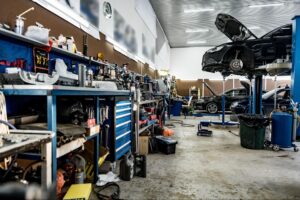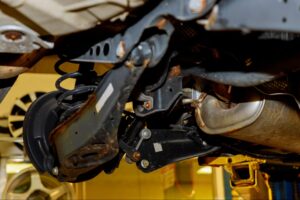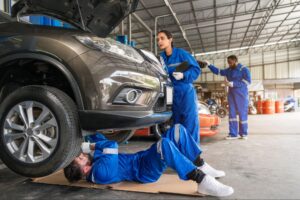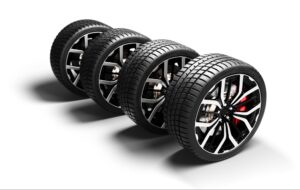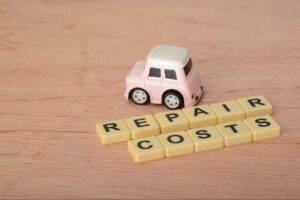
Signs Your Suspension System Needs Repair or Replacement
Driving style plays a direct role in suspension longevity. Rapid acceleration, sharp turns, and sudden stops put stress on shocks, struts, and springs. Carrying heavy loads compresses springs and reduces their ability to absorb bumps. Hitting potholes or speed bumps at high speeds accelerates wear on bushings and mounts. Smooth, steady driving reduces strain and extends part life. Adjusting habits is one of the easiest ways to keep the suspension reliable.
Understanding a Vehicle Suspension System
A vehicle suspension system maintains a smooth and stable ride by absorbing bumps and ensuring tire grip. It supports the vehicle’s weight, allows for controlled movement, and ensures safe handling. Without it, road vibrations would transfer directly to the cabin, making driving uncomfortable and unsafe. Knowing its role helps you detect problems before they compromise safety.
Main Components in a Suspension System
The suspension system contains springs, shocks, struts, control arms, and bushings. Springs absorb vertical movement and support weight. Shocks and struts manage rebound and prevent excessive bouncing. Control arms connect wheels to the frame and allow movement over uneven surfaces. Bushings act as cushions to reduce vibration between parts. If one component fails, the entire system’s performance suffers.
Suspension Problem Signs Needing Repair or Replacement
A failing suspension system shows warning signs of handling, tire wear, and ride comfort. Recognizing these changes early helps avoid higher repair costs and safety risks. Problems can develop gradually, so regular attention to your vehicle’s feel and response is essential. Addressing them promptly keeps your ride safe and predictable.
Uneven or Rapid Tire Wear
Uneven tire wear often signals a suspension issue or alignment problem. Certain tread areas wear faster when the suspension fails to hold tires evenly on the road. It reduces tire lifespan and increases the risk of blowouts. Checking your tires regularly can reveal early signs of imbalance. Addressing suspension alignment improves handling and saves money on premature tire replacement.
Excessive Bouncing or Harsh Ride
Worn shocks or struts cause your vehicle to bounce more after hitting a bump, leading to a rougher ride and more body sway. You might feel the vehicle shake after potholes or speed bumps. Performing a bounce test, such as pressing the hood and observing the rebound, can reveal potential problems. If the vehicle bounces more than twice, the suspension likely needs attention.
Vehicle Pulling or Drifting
The suspension may be misaligned or damaged if your car drifts to one side while driving straight. That makes steering less accurate and increases fatigue on longer drives. Suspension-related pulling often worsens when braking or accelerating. Unlike simple alignment issues, suspension damage can affect several connected parts. Fixing the cause restores stability and reduces wear on steering components.
Nose Diving or Rear Squatting
Worn shocks allow the front end to dip sharply when braking. This nose-dive reduces stopping control and increases risk during emergencies. Rear squatting during acceleration also affects stability. Both issues indicate a suspension unable to manage weight transfer. Correcting these problems keeps braking and acceleration predictable.
Unusual Noises Over Bumps
When driving over bumps, clunking, squeaking, or knocking sounds often point to worn bushings, ball joints, or strut mounts. These noises usually get louder over time and indicate looseness in the suspension. Ignoring them can cause further wear to nearby parts. Because noises can come from multiple areas, professional diagnosis is necessary. Timely repairs keep the suspension operating smoothly.
Safety Risks of Suspension System Damage
A damaged suspension system reduces vehicle safety by affecting braking, steering, and tire grip. The system’s job is to keep the vehicle balanced and responsive. Once it fails, emergency reaction time decreases, and stopping distances increase. The risks only grow as components wear further.
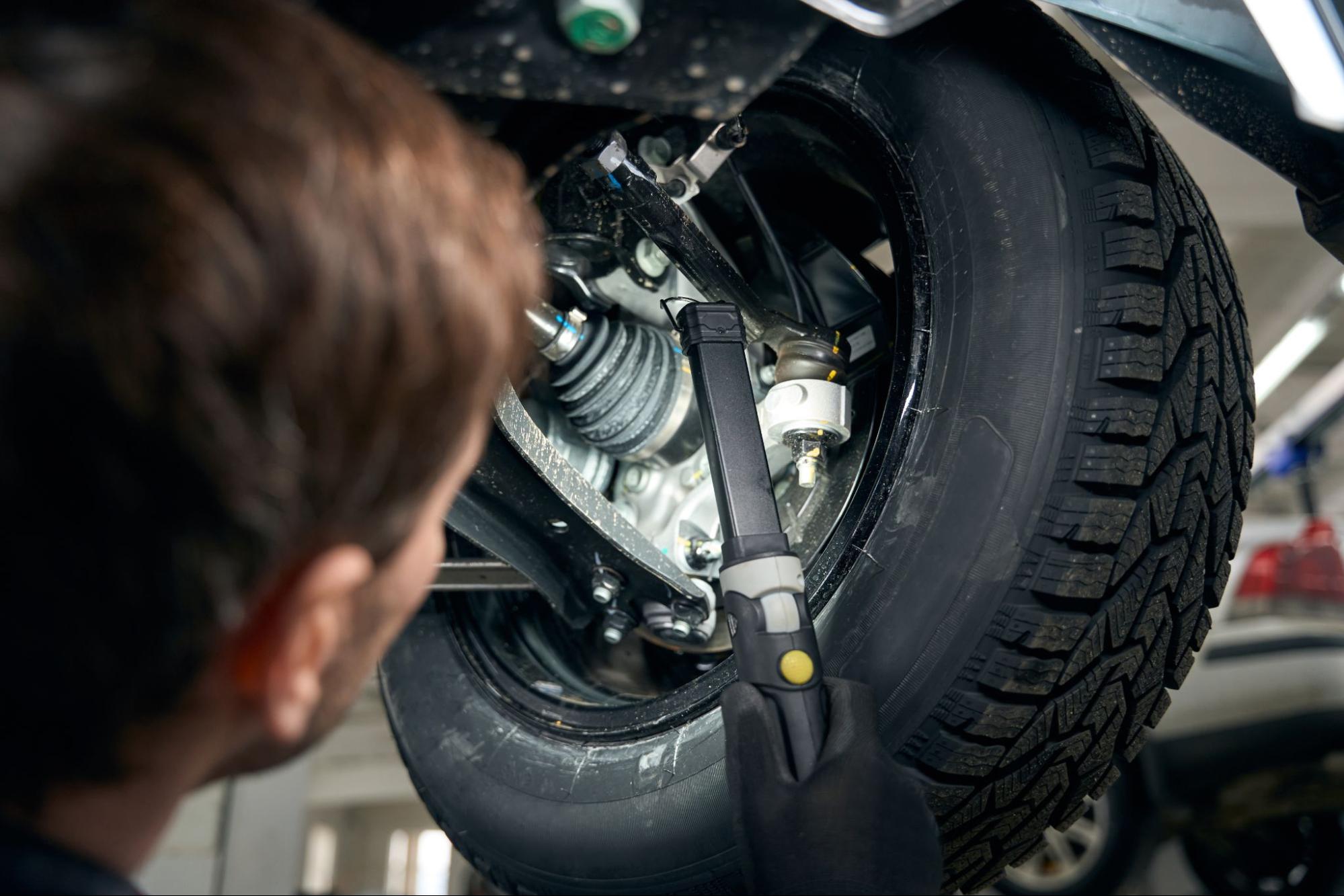
Increased Stopping Distances
Worn shocks and struts reduce how well tires stay on the road during braking. That can add several feet to your stopping distance. In sudden stops, that extra space can cause collisions. Front-end dipping during braking also shifts weight and reduces brake efficiency. Maintaining a healthy suspension ensures the brakes work as intended.
Reduced Steering Response
A failing suspension can make steering feel loose or unsteady. It can affect your ability to navigate curves or avoid obstacles quickly. On slippery roads, a slower steering response becomes even more dangerous. Suspension repairs restore precise control and improve overall handling. Strong steering feedback is essential for safe driving.
Loss of Tire Grip
Suspension problems reduce tire contact with the road, lowering traction. Poor grip increases skidding risks, especially in wet or uneven conditions. It also makes accelerating and braking less effective. Suspension maintenance keeps tire grip consistent and dependable. Strong traction supports both safety and performance.
How Weather and Roads Impact Suspension Systems
Local weather patterns and road conditions can speed up suspension wear. Winter road salt can corrode metal parts like springs and control arms in colder climates. Potholes often form after freeze-thaw cycles, causing sudden, forceful impacts that strain shocks and bushings. Hot summer temperatures can cause rubber components to dry out, leading to cracking or loss of flexibility. In coastal areas, salt in the air can cause gradual rusting even without snow. Knowing how your environment affects your suspension can help you schedule inspections before seasonal wear and tear turn into costly repairs.
Professional Suspension System Care
Professional inspections confirm suspension damage and determine whether repair or replacement is necessary. Technicians use specialized tools to measure wear and identify hidden issues. Routine checks reduce repair costs and prevent roadside breakdowns. Choosing a skilled mechanic ensures repairs are completed to high safety standards.
Best Times for Suspension Inspection
Most vehicles should have their suspension checked every 12,000 to 15,000 miles. Unusual noises, handling changes, or visible tire wear mean you should book sooner. Seasonal changes can also impact performance, especially in cold or wet climates. Drivers on rough roads should schedule more frequent inspections. Early detection saves money and reduces accident risk.
Common Suspension Repairs
Typical repairs include replacing shocks, struts, bushings, or springs. Control arms and ball joints may also need replacement over time. Lifespan depends on driving conditions and maintenance habits. Quick repairs prevent damage to connected parts like the steering and brakes. Quality parts extend the time before further repairs are needed.
Extending Suspension Life
Rotating tires and maintaining proper wheel alignment help balance suspension wear. Avoid carrying excessive weight to prevent strain on springs and shocks. Drive cautiously over potholes and uneven terrain to limit impact damage. Regular visual checks can also reveal leaks or damage. Small maintenance habits can add years to your suspension’s life.
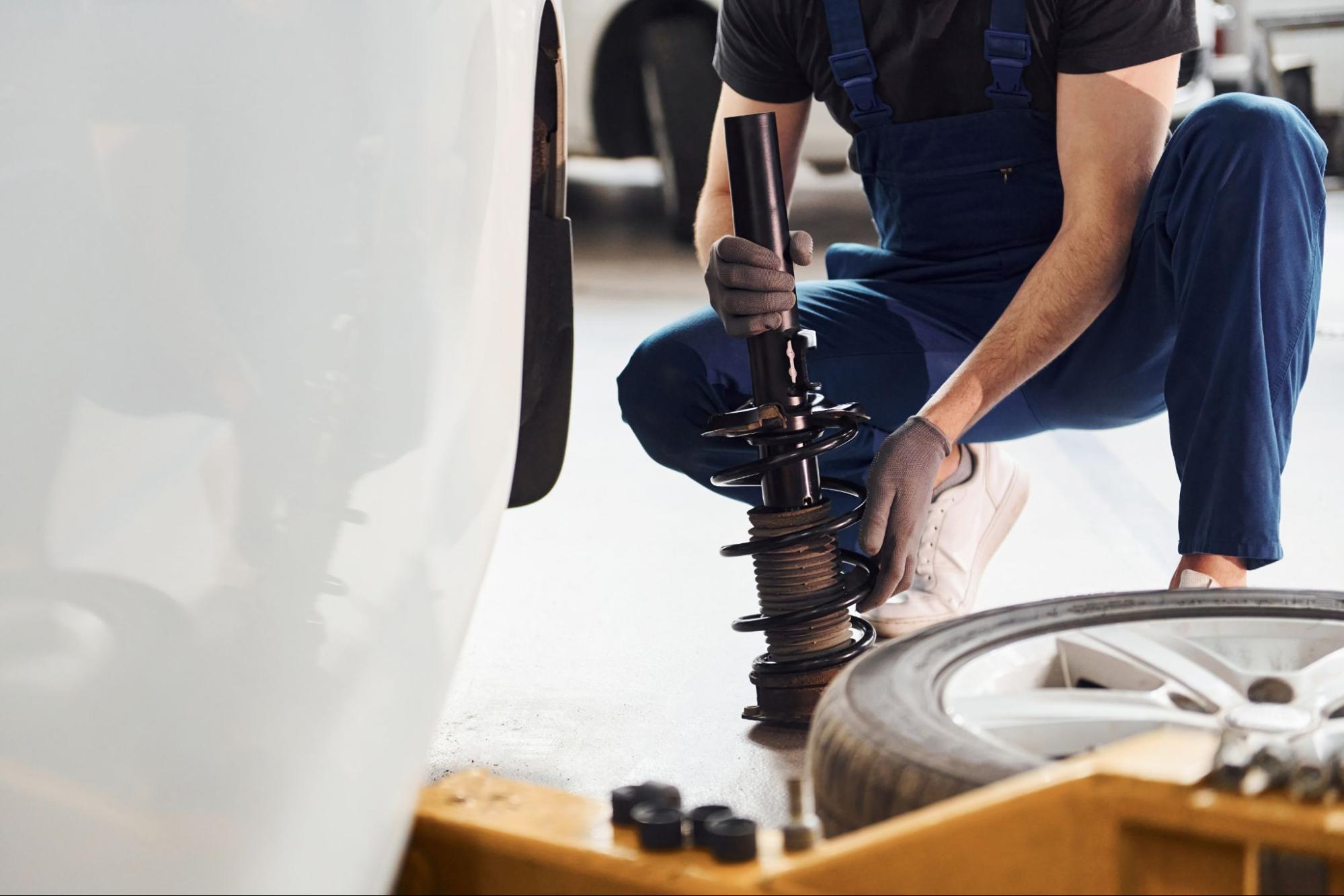
How Driving Habits Affect Suspension Life
Driving style plays a direct role in suspension longevity. Rapid acceleration, sharp turns, and sudden stops put stress on shocks, struts, and springs. Carrying heavy loads compresses springs and reduces their ability to absorb bumps. Hitting potholes or speed bumps at high speeds accelerates wear on bushings and mounts. Smooth, steady driving reduces strain and extends part life. Adjusting habits is one of the easiest ways to keep the suspension reliable.
Why Timely Suspension System Repairs Matter
Delaying suspension repairs increases repair costs and puts safety at risk. The suspension affects braking, steering, and tire life, so problems spread quickly. Ignoring early signs often leads to replacing multiple parts instead of one. Acting promptly keeps your vehicle safe, stable, and cost-efficient to run.
Choosing a Skilled Mechanic
Look for a repair shop with experience in suspension diagnostics and repairs. Skilled mechanics use the right tools and techniques to identify problems accurately. A trustworthy shop offers clear explanations and transparent pricing. Building a relationship with a mechanic helps with quicker future repairs. Consistency in service also improves your vehicle’s long-term reliability.
Repair Costs Compared to Delays
Minor suspension repairs are far less expensive than full system replacements. Delays can damage tires, brakes, and steering components. Properly repairing issues also reduces the risk of breakdowns. The cost of early intervention is almost always lower than repairing advanced damage. Preventive repairs keep your car safer and more affordable to maintain.
Long-Term Cost of Ignoring Suspension Repairs
Neglecting suspension issues often leads to higher repair bills over time. Failing shocks or struts can damage tires, brakes, and steering components, which are costly to replace. When these parts wear out together, expenses can climb quickly. Uneven tire wear alone may add hundreds in replacement costs each year. Delayed repairs can also lead to breakdowns, towing fees, and missed work. Maintaining the suspension now prevents financial strain and keeps the vehicle dependable.
Common Myths About Suspension Systems
Misunderstanding how a suspension system works can lead to poor maintenance decisions. Many drivers believe the suspension only affects ride comfort but directly impacts safety and braking performance. Others assume that the suspension is fine if the car still moves. Minor faults can escalate into system-wide damage without obvious early symptoms. Addressing these misconceptions helps drivers make informed repair decisions.
“If the Ride Feels Fine, the Suspension Is Fine”
A vehicle can mask suspension issues early, making the ride seem normal. Small amounts of wear on shocks or bushings may not create immediate discomfort. However, these parts could still reduce braking efficiency and steering precision. When riding quality changes noticeably, other parts might already be damaged. Regular inspections detect problems before they cause chain reactions in different systems.
“Suspension Repairs Can Wait Until Next Service”
Postponing suspension repairs increases the risk of related tire, brake, and steering failures. The extra strain on connected parts can shorten their lifespan even if the vehicle seems safe. It often leads to multiple repairs instead of a single fix. A professional inspection after detecting symptoms saves money and improves safety. Quick action also prevents breakdowns in high-risk driving situations.
“Only Off-Road Driving Damages Suspension”
While rough terrain accelerates suspension wear, normal city or highway driving can cause damage over time. Potholes, speed bumps, and sharp turns create repeated stress on components. Seasonal temperature changes can also affect the materials in shocks, bushings, and springs. Urban drivers may even see faster wear if roads are in poor condition. Consistent care is necessary no matter where you drive.
Restore Confidence in Your Suspension System
Every mile you drive either protects or wears down your suspension system. Ignoring minor signs now can turn into costly repairs and dangerous driving conditions later. A healthy suspension doesn’t just improve comfort; it safeguards every turn, stop, and lane change. If your vehicle’s handling feels different or less stable, that’s your signal to act. A prompt inspection from a trusted professional can keep you in control and prevent bigger problems. Your next drive should feel steady, predictable, and safe, and your suspension system plays the lead role in making that happen.
Visit the Cordova Auto Service & Mufflers blog for practical guides, maintenance insights, and professional advice to keep your car road-ready.
